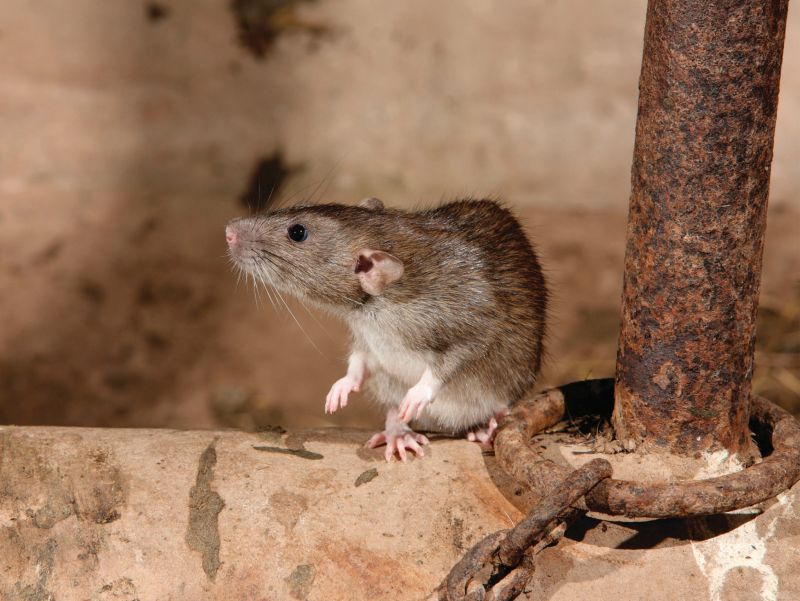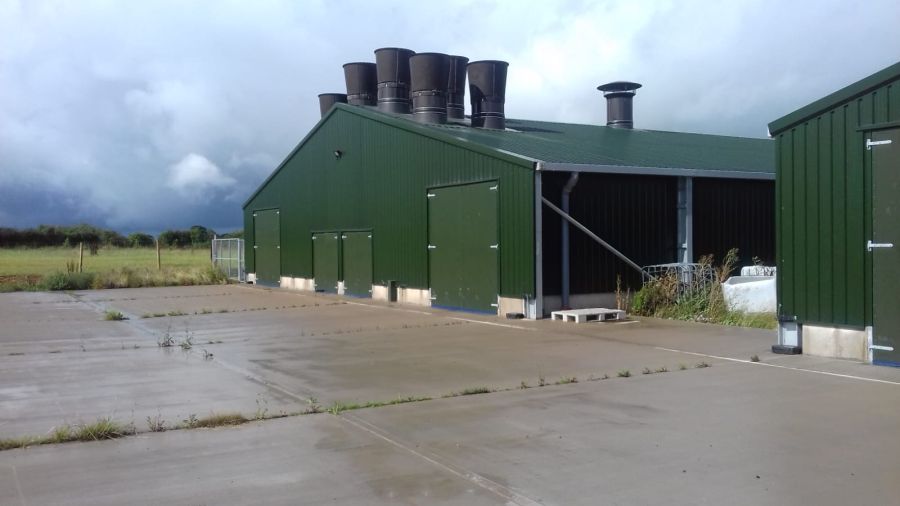
A pest control expert has shared his views on rodent control within the free range egg industry, and how to prevent the situation in the 80's repeating itself again.
The free range market has grown considerably over the last two decades to make up the majority of the UK laying flock.
This has been brought about through a combination of consumer demand, diversification and the success of the industry in promoting eggs a safe and nutritious food source.
However those who have been part of the industry at the time of Edwina Curry’s damning statement in 1988 stating that most of the UK’s laying flock was affected by Salmonella.
This led to an overnight colossal drop in egg consumption, and with that came bankruptcies, divorces and suicides. While her statement was not entirely accurate there was a problem that was in part, caused by rodent control.
Poultry firm Rosehill’s work is in ensuring the correct administration of poultry vaccines, and the introduction of live Salmonella poultry vaccines has been successful in dramatically reducing salmonella prevalence in the UK to less than 0.1%.
It is important to remember all vaccine will only work up to a certain threshold of challenge. An out of control rodent population can be enough to cause a flock to go salmonella positive.
The firm sat down to talk with Lindsay Silvester MBPR (PC), who works as part of Advanced Pest Management Ltd, a Shropshire based firm.
He is an experienced pest control expert that works extensively in the egg industry to understand how the sector can help prevent the situation in the 80’s repeating itself.
What do you find to be the biggest challenge in controlling rodents on farm?
The first and most important issue is to prevent rodents from gaining access to the inside of the house, as once a mouse population is present they have a ready source of high quality feed, warmth and nesting areas.
A mouse will only need a 5mm gap in order to gain access and rats need 20mm. As mice only need a 15% water content in their food to give them adequate hydration they do not need to venture outside to find water.
A rat will be forced to enter and leave the shed in search of a water source. Both rats and mice can cause massive damage to electrical wiring, technology and the structure of the building.
In order to keep rodents from entering the building it requires a combination of physically blocking any entrances and external baiting. Pipes and inlets provide the main entrances, muck belt areas that lead to the external conveyor and not having tightly fitting brushes on the bottom of the doors are also risk factors.
External baiting is under pressure due to secondary poisoning of birds of prey being a threat, however it is still legal if a professional pest controlling is visiting to check the bait boxes once per month, when using toxic baits
When a rodent population is present within the house what course of action would you take?
The key thing to understand is what control methods and baits have been used so far. As the chicken feed is perfect for rats and mice one of the most important areas of attention is trying different baits to discover which one they will consume as they can be very picky.
I have carried out tests on several farms using cut wheat, whole wheat and fat based baits and have found a product called Talonsoft to be very effective, quite often a large rodent population will be present yet despite the amount of rodents present they would still not take certain baits such as whole wheat or cut wheat.
Also there are key differences between rats and mice, a rat is neophobic by nature and will be extremely cautious about taking bait from a box.
They will only follow a single path from where they are nesting, to the food source and back. Therefore with rats a product that is a foam is used around their paths and the gaps they are travelling through, which when on the rodents fur is fatal when the rat grooms itself and ingests the poison.
The poison must be taken to the rat so understanding where there nest is located is a must. Mice are more sporadic which means that it is important once the right bait is found to ensure there are sufficient bait points.
A large mouse population poses a significant salmonella risk as the mouse will urinate constantly onto the feed, the drinker lines and the chicken areas. This is what can overwhelm a vaccine and lead to a positive flock.
What steps can be taken in managing a site to reduce rodent problems?
Harbourage – pallets, boxes and bits of equipment stacked against walls, bails of miscanthus grass stored in the control room. You should take an objective eye to your site and have each area as bare as possible.
That means inside and outside the shed. The area of ground between sheds should be free from any items and bare. Inside the shed should only have essential items and if miscanthus or any other product mice or rats will eat is present then is should be off the ground. Preferably these items would be stored away from the chickens.
By taking away the possible nesting areas you are limiting the breeding areas and also you will be aware of when you may have issues.
Bait Points – Firstly there should be an adequate amount of bait points inside and outside the units. As a rough estimate each 16,000 bird unit should have a minimum of approximately 15 bait points in the control room.
Baits should be changed frequently (once per month), even if they are not being consumed as once a wheat based bait gets damp it will begin to decompose, also this is the case if the bait is aged as it will lose its flavour, scent and attractiveness to the rodents.

Also do not overfill the bait points, 50g of product is adequate. Remember that if you place 50g of bait in the box and it is empty when you come back, don’t just put 50g in the next time as the rodent population is large enough for them to fully consume this, put 100g in and see how much is left.
How would you control rodents on a flat deck unit?
The mice will be living in the muck below the slats predominantly, as such we have to find a way to get the bait to them.
One method which has proved very effective is to take a small covered bucket, drill several holes of approx. 3cm in size near the base and then using a piece of rope suspend the bait buckets from the underside of the slat a couple of inches above the litter.
As the litter gets higher ensure you are lifting the buckets to keep it slightly above the surface of the muck. These bait buckets should be checked weekly, approximately 10-20 of the suspended bait buckets are required per side.
Also you can use a product such as Talon soft which is a sticky substance on the underside of the nest boxes where the chickens cannot access it.
Squeeze a 20-30g blob onto an area that would be used by rodents to get to the feed. As many blobs can be used as needed, but as source of reference 720 were used when baiting the legs of a colony unit.
Finally on turnaround this is an excellent chance to kill the majority of the rodent population by immediately placing bait points throughout the unit after the birds and feed have been removed.
The rodent population will become much less selective when their source of food has been removed and this can decimate the population for a long period of time.
What errors can be made by both professional and self certified rodent controllers?
I would always recommend that a poultry farm uses a professional pest control expert as they will be coming onto your site at fixed intervals and will be solely concerned within controlling rodents.
A good pest control firm will send the same pest control officer each time as it is important that an understanding is built up of the site.
Also this will ensure that any issues that changes in baiting laws are abided by and also the most effective products are used for your site.
Each site is different so it is very much a partnership that is needed between the pest controller and the site manager.
Under baiting or use of inappropriate measures of control. If a bait box has been emptied each week this shows that more bait is needed as it should not be completely empty. The issue with not using enough bait is that it will lead to population maintenance rather than reduction.
Coming back to harbourage, having any unneeded clutter will contribute towards a rodent issue. The cleaner an area the easier it is to control rodents as you are limiting the possible nesting areas.
Remember that controlling rodent population is especially difficult in the autumn as the harvesting is moves field mouse into the sheds alongside the change in weather.
Also during an especially wet period or a dry and hot period rodents will also be driven towards a place where access to water is readily available.
This is where having a well blocked shell to the building is useful with no holes or gaps under doors. The problem you will always face is rodents entering through the pop holes which is difficult to get around with external baiting.
